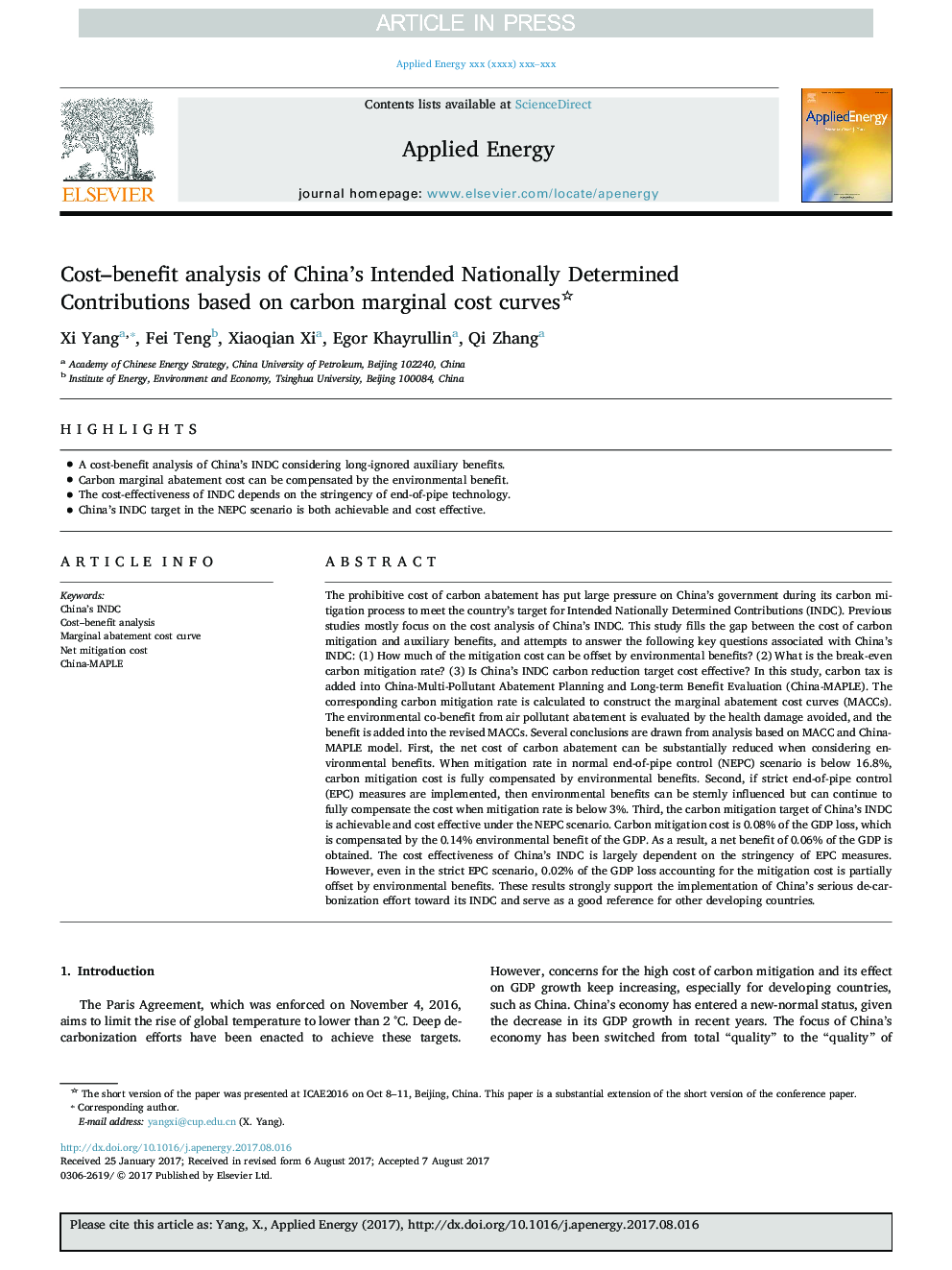| کد مقاله | کد نشریه | سال انتشار | مقاله انگلیسی | نسخه تمام متن |
|---|---|---|---|---|
| 8953462 | 1645936 | 2018 | 11 صفحه PDF | دانلود رایگان |
عنوان انگلیسی مقاله ISI
Cost-benefit analysis of China's Intended Nationally Determined Contributions based on carbon marginal cost curves
ترجمه فارسی عنوان
تجزیه و تحلیل هزینه-سود از پیش بینی های ملی تعیین شده چین بر اساس منحنی هزینه های حاشیه ای کربن
دانلود مقاله + سفارش ترجمه
دانلود مقاله ISI انگلیسی
رایگان برای ایرانیان
کلمات کلیدی
موضوعات مرتبط
مهندسی و علوم پایه
مهندسی انرژی
مهندسی انرژی و فناوری های برق
چکیده انگلیسی
The prohibitive cost of carbon abatement has put large pressure on China's government during its carbon mitigation process to meet the country's target for Intended Nationally Determined Contributions (INDC). Previous studies mostly focus on the cost analysis of China's INDC. This study fills the gap between the cost of carbon mitigation and auxiliary benefits, and attempts to answer the following key questions associated with China's INDC: (1) How much of the mitigation cost can be offset by environmental benefits? (2) What is the break-even carbon mitigation rate? (3) Is China's INDC carbon reduction target cost effective? In this study, carbon tax is added into China-Multi-Pollutant Abatement Planning and Long-term Benefit Evaluation (China-MAPLE). The corresponding carbon mitigation rate is calculated to construct the marginal abatement cost curves (MACCs). The environmental co-benefit from air pollutant abatement is evaluated by the health damage avoided, and the benefit is added into the revised MACCs. Several conclusions are drawn from analysis based on MACC and China-MAPLE model. First, the net cost of carbon abatement can be substantially reduced when considering environmental benefits. When mitigation rate in normal end-of-pipe control (NEPC) scenario is below 16.8%, carbon mitigation cost is fully compensated by environmental benefits. Second, if strict end-of-pipe control (EPC) measures are implemented, then environmental benefits can be sternly influenced but can continue to fully compensate the cost when mitigation rate is below 3%. Third, the carbon mitigation target of China's INDC is achievable and cost effective under the NEPC scenario. Carbon mitigation cost is 0.08% of the GDP loss, which is compensated by the 0.14% environmental benefit of the GDP. As a result, a net benefit of 0.06% of the GDP is obtained. The cost effectiveness of China's INDC is largely dependent on the stringency of EPC measures. However, even in the strict EPC scenario, 0.02% of the GDP loss accounting for the mitigation cost is partially offset by environmental benefits. These results strongly support the implementation of China's serious de-carbonization effort toward its INDC and serve as a good reference for other developing countries.
ناشر
Database: Elsevier - ScienceDirect (ساینس دایرکت)
Journal: Applied Energy - Volume 227, 1 October 2018, Pages 415-425
Journal: Applied Energy - Volume 227, 1 October 2018, Pages 415-425
نویسندگان
Xi Yang, Fei Teng, Xiaoqian Xi, Egor Khayrullin, Qi Zhang,
